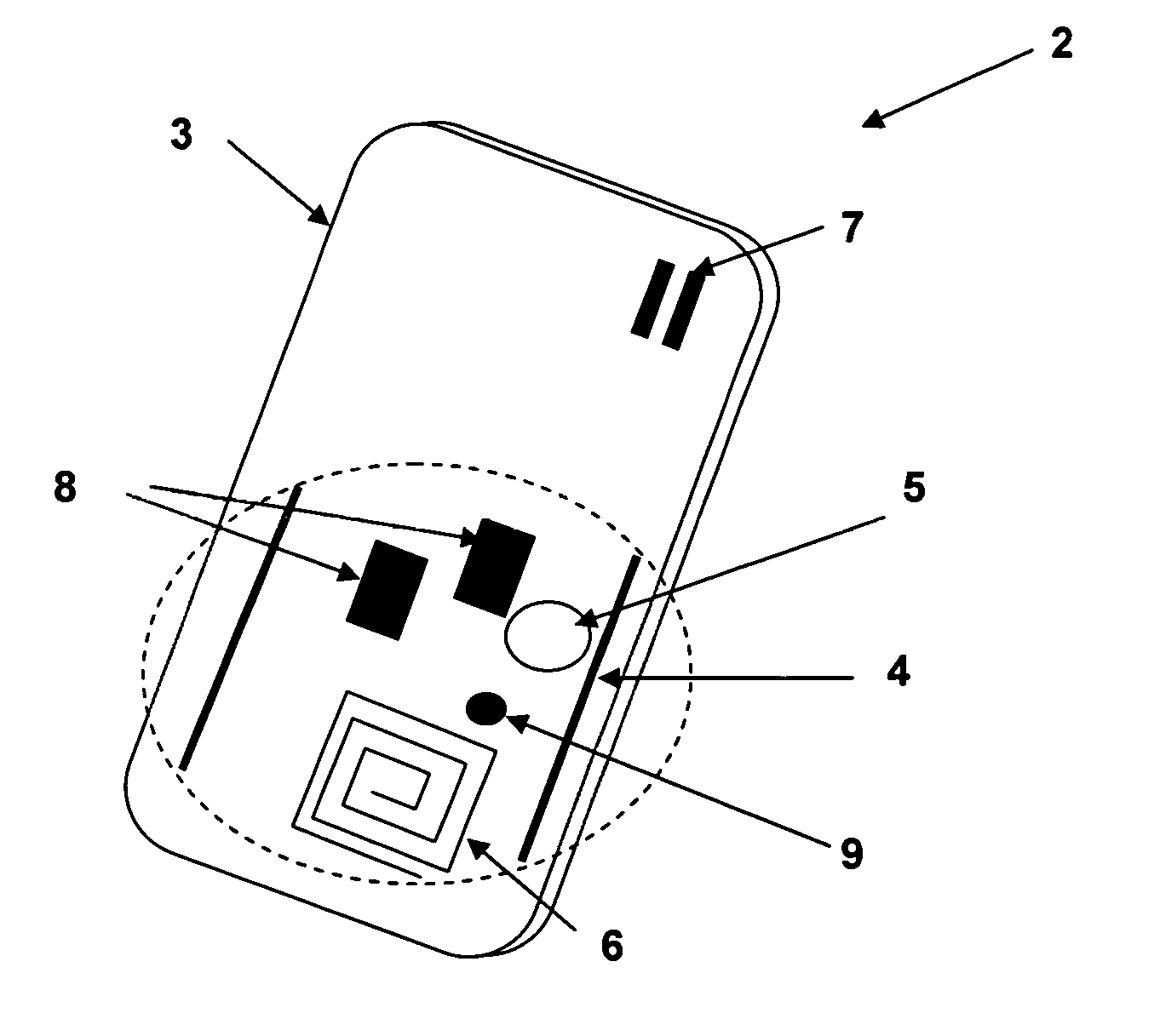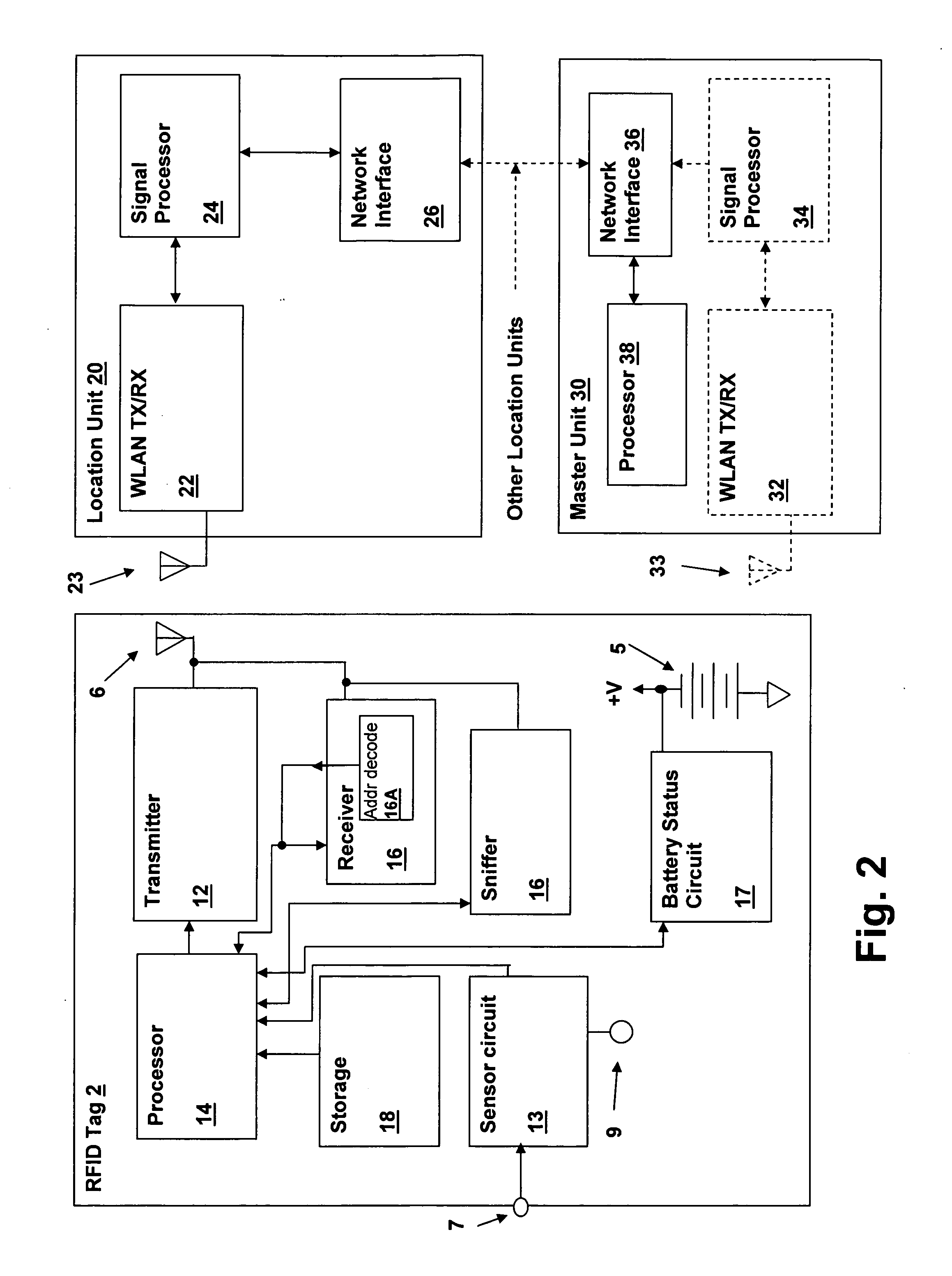Radio-frequency identification (RFID) tag employing unique reception window and method therefor
a radio frequency identification and unique technology, applied in the field of low-power radiofrequency identification tags and systems, can solve the problems of inability to determine the sniffer circuit and the limited system of the above-mentioned system, and achieve the effect of low-power operation
- Summary
- Abstract
- Description
- Claims
- Application Information
AI Technical Summary
Problems solved by technology
Method used
Image
Examples
Embodiment Construction
[0018] The present invention includes improvements to the radio-frequency identification (RFID) tag disclosed in the above-incorporated parent application, which includes illustrative embodiment of RFID tags for use in a wireless local area network (WLAN) environment. The RFID tags of the present invention include circuitry implementing a reception window during which receiver circuits are powered subsequent to a periodic transmit interval of the RFID tags. The WLAN or other system may address individual tags thereby without requiring that the tag receiver be constantly active and thereby receive all signals transmitted by the system. It should be understood by those of ordinary skill in the art that the present invention applies to other forms of identification tags, as well. For example, low frequency identification tags may be made and operated in accordance with embodiments of the present invention that are not WLAN-compatible.
[0019] Referring to the figures, and in particular ...
PUM
 Login to View More
Login to View More Abstract
Description
Claims
Application Information
 Login to View More
Login to View More - R&D
- Intellectual Property
- Life Sciences
- Materials
- Tech Scout
- Unparalleled Data Quality
- Higher Quality Content
- 60% Fewer Hallucinations
Browse by: Latest US Patents, China's latest patents, Technical Efficacy Thesaurus, Application Domain, Technology Topic, Popular Technical Reports.
© 2025 PatSnap. All rights reserved.Legal|Privacy policy|Modern Slavery Act Transparency Statement|Sitemap|About US| Contact US: help@patsnap.com



